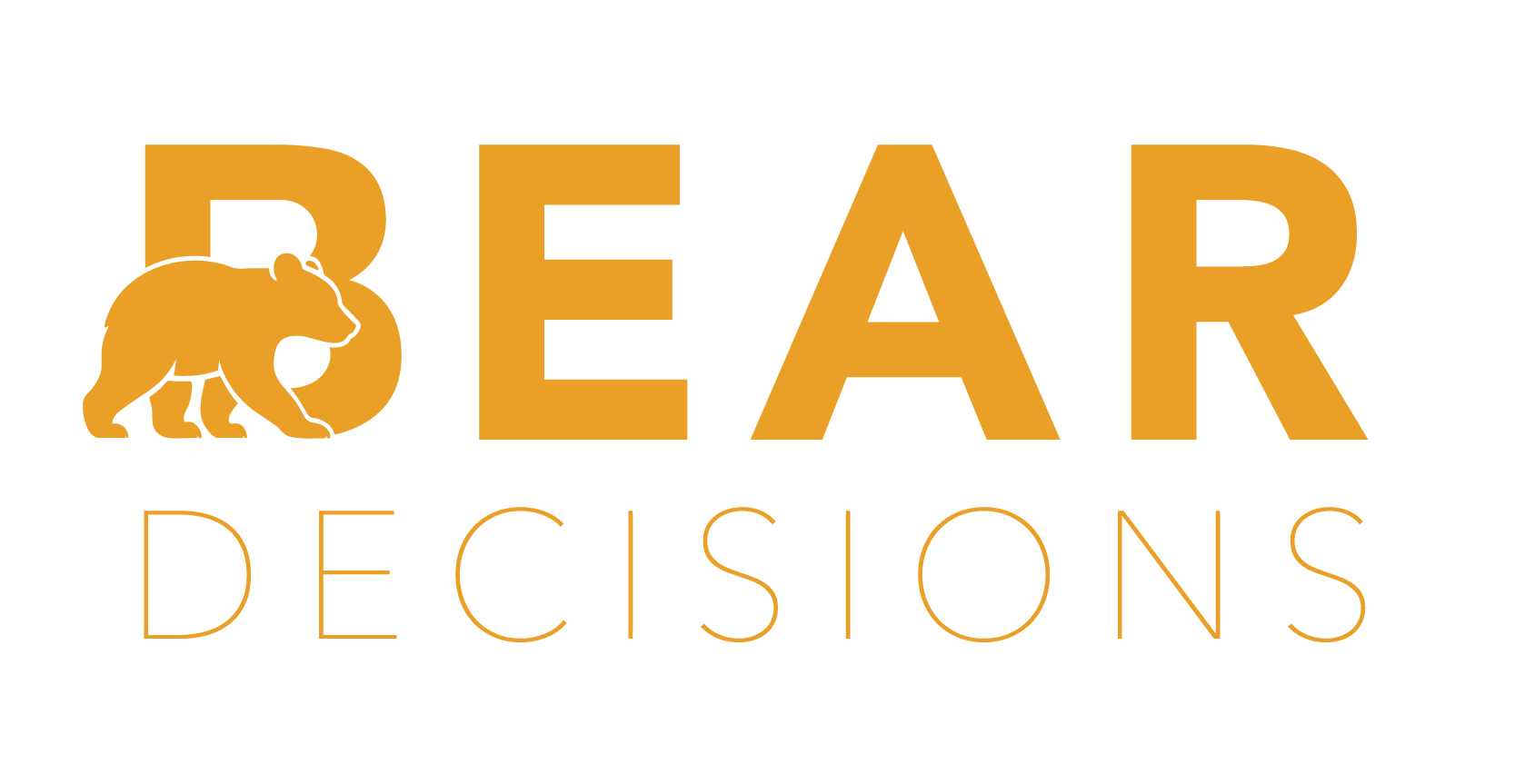
What is Bear Decisions?
 Mark
MarkWhat is Bear Decisions?
Bear Decisions is about going home on time.
You know that moment when your boss asks 'What if we cut the budget by 20%?' and you realize you'll spend the next 6 hours creating new scenarios?
Bear Decisions eliminates that moment.
But that's not all it helps with.
Over the past week, I've gotten some great questions about whether Bear Decisions would work for your specific challenges. Let me break it down clearly—what it is, what it isn't, and who it's really for.
What Bear Decisions IS
Bear Decisions is an application that helps you get a clearer set of expectations for the possible outcomes of different decisions, faster. Its goal is to enable a better understanding of your key incremental decisions and critical risks, and improve your ability to make data-informed decisions.
Bear Decisions achieves this by automating the generation of scenarios covering decision options and uncertainty outcomes, leveraging your existing Excel model. This takes the grunt work out of generating, then organizing the cases.
Bear Decisions then consolidates this data into a single data set, making analysis easier. It provides easy to use visualizations, transformations and groupings to help you rapidly analyze the outcomes and truly understand what drives your results.
It removes (most of) that sinking feeling when someone finds an error in your 'final' analysis.
It helps you make better data-informed decisions faster, especially at scale when there are many different decisions and uncertainties to consider.
Here's the core of what it does:
1. Keeps Your Excel Work Valuable
- Works with the spreadsheets that you've already built and tested
- Your formulas, macros, and links stay exactly where they are
- No rebuilding, no starting over, no months of migration or implementation work (and the risks that come with that)
2. Eliminates Manual Scenario Work
- Automatically generates every combination of your decisions and uncertainties
- No more "save as" nightmares or endless copy-paste cycles
- Test hundreds of scenarios in seconds, not hours - allowing you to rapidly validate changes to your model, and turn around analysis of new what-ifs or risks in a fraction of the time
3. Adds Probability-Based Analysis
- Weight different outcomes by how likely they are to happen, and see combined likelihoods across all your assumptions
- Focus on what's most probable, not just what's theoretically possible
4. Provides Clear Visualizations
- Brings all the different outputs together into one place then provides built-in visualizations to help you understand what drives your results
- Range charts, heatmaps, and distribution plots—all in Excel's task pane (or a full sized, pop-up dashboard)
- Group results by decision or uncertainty combination
5. Enables One-Click Implementation
- Pick your preferred scenario from the analysis
- Push all inputs back to your Excel model with one click
- Iterate quickly without manual data entry - no copy-paste, no manual data entry, no errors...
What Bear Decisions ISN'T
Let's be clear about what we don't do (yet):
Not a Replacement for Excel
- We enhance Excel, we don't replace it
- Your data stays in your spreadsheet
- You keep working in the environment you know
Doesn't make your models more complex
- Bear Decisions gives you a lot more capability, without adding complexity
- This does mean however that you may need to do some more work once you are able to test out all the scenarios to make sure they are all valid!
Not Monte Carlo Simulation (yet)
- We do deterministic scenario analysis really well
- Monte Carlo capabilities are on the roadmap, but not available yet
- Think of us as "Excel's What-If Manager, but actually useful"
Not an Enterprise System
- No complex implementations or IT projects
- No months of training or change management
- Install in minutes, see value immediately
Not Requiring Coding Knowledge
- No Python, R, or VBA required
- All calculations use your Excel model's existing logic
- Point, click, analyze—that's it
The Core Framework: Decisions vs. Uncertainties
Bear Decisions helps you think about two different types of inputs in your models:
Decisions
The things you control & the choices you need to make, like:
- Which strategy to pursue
- How much to invest
- Which market to enter
- What price to set
Uncertainties
The things you don't control & the risks you need to plan for, such as:
- Market growth rates
- Competitor responses
- Regulatory changes
- Economic conditions
- Performance of your team, plant, or product
This distinction matters because good analysis considers all combinations of both.
Who Is This Really For?
Bear Decisions is perfect if you:
- You've built complex Excel models that actually work
- You're tired of manual scenario variations
- You need to show stakeholders multiple outcomes
- You want to quantify uncertainty, not just guess at it
You may fit one of these roles:
- The Planner: Juggling multiple strategies, need fast what-if analysis
- The Budget Analyst: Spending too much time on scenario variations
- The Manager: Pitching business cases with confidence and data
- The Excel Power User: Built something amazing, wish it handled uncertainty better
Or you have these specific pain points:
- Hours lost to copy-paste and version chaos
- Multiple files that look like "final-plan_v4 (updated) 2.xlsx"
- Uncertainty that never gets properly quantified
- Stakeholders asking "but what if...?" and you can't answer quickly
- Reach to Excel when you get a new question, but know you are going to have a headache before you are finished
Even if you don't fit one of these roles, you may still find value in Bear Decisions. It's a great way to get a better understanding of your options and likely outcomes. I would love to hear from you about what decisions you would like to apply it towards and how I can help you.
A Simple Example
Let's say you're planning a product launch with:
- 3 pricing strategies (decisions you control)
- 3 market conditions (uncertainties you don't control)
- 3 competitive scenarios (more uncertainties)
That's 27 different combinations to consider. I don't want to do that manually, and I am sure you have better things to do with your time. Bear Decisions generates all 27 automatically, lets you weight the likelihood of each uncertainty, and shows you which pricing strategy performs best across the most probable scenarios.
Your Excel model does the calculations. Bear Decisions handles the combinations, probabilities, and analysis.
Now think about all the other factors that you would want to consider if you were making this decision. Imagine what you could do with those hours (days?) back!
The Bottom Line
Bear Decisions doesn't promise to solve every planning or decision-making problem. But if you're an Excel user who's tired of manual scenario work and wants to make decisions with better data, we're built for you.
After the last decade trying to help people make better planning decisions, I have seen the same patterns over and over again. I am just really glad that I can now offer you a solution that is both powerful and easy to use. Something that helps you today - not in 6 months time.
We're not trying to be everything to everyone. We're trying to be exactly right for people who think in spreadsheets but have to decide in the real world.
Want to start going home on time today? Join the growing community of analysts who are done with manual scenario work. Join our waitlist for early access, updates and to be amongst the first group to turn your Excel nightmares into a competitive advantage.
What's your biggest spreadsheet nightmare? Drop me a line at mark@babybearanalytics.com or connect with me on LinkedIn. I read every message.